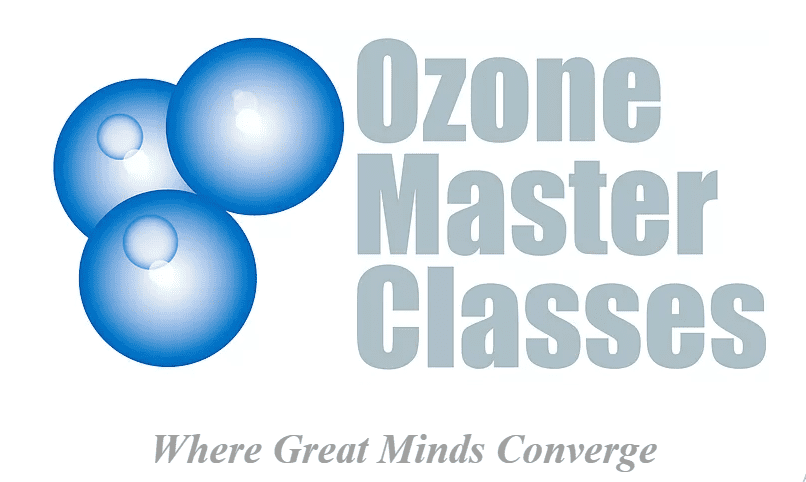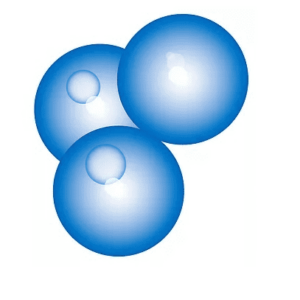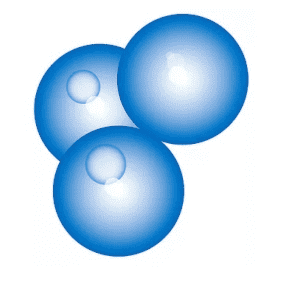Dr. Menendez & Dr. Artamonov: Monday April 10th workshop
$1,280.00
This workshop will be the most comprehensive and updated on hydrogen therapy offered in United States to date, accompanied by a modern device that you will be able to use to implement Dr. Artamonov’s protocols. The workshop will be taught by an expert, Dr. Mikhail Artamonov, MD, PhD, and President of the American Society of Medical Gases.
The workshop will be packed with the latest information on Hydrogen Therapy but most of your time will be spent learning and applying the proven protocols of Dr. Artamonov, which he will present.
On Monday, April 10th, there will be two half-day workshops presented. Dr. Silvia Menéndez, PhD, will teach two classes in the morning, and Dr. Mikhail Artamonov, MD, PhD, will teach his workhop on Xenon gas in the afternoon. Please find below the description of Dr. Menéndez' three presentations (her presentation on ozonated oils will take place on Saturday after lunch) as well as Dr. Artamonov's most interesting workshop on the medicinal uses of Hydrogen gas.
Dr. Silvia Menédez, PhD (morning class):
I. PROTECTIVE EFFECT OF OZONE IN AUTOIMMUNE AND INFLAMMATORY DISEASES. RHEUMATOID ARTHRITIS AND MULTIPLE SCLEROSIS
ABSTRACT
Ozone has been used as a therapeutical agent for the treatment of different diseases and beneficial effects have been observed. However, ozone's biological effects remain controversial due to the scarce knowledge of its biochemical and pharmacodynamic mechanisms. Based on the oxidant properties of ozone, we postulate that controlled ozone administration (named as ozone oxidative pre-/postconditioning mechanism) can promote a slight and transient oxidative stress which in turn re-establishes the signaling pathways which have been lost in pathological conditions, preserving the cellular redox balance (increasing antioxidant endogenous system), mitochondrial function as well as the regulation of transcription factors and the modulation of the immunological system. It is evident that membrane-associated ozone peroxides, 4-hydroxyalkenals, superoxide anion, and nitric oxide, among others, are going to play an important role in cellular signals as well as in the pathology of different diseases. Regulation of these biomolecules by ozone preconditioning has been demonstrated in several preclinical and clinical studies such as rheumatoid arthritis and multiple sclerosis. Ozone oxidative preconditioning/ postconditioning effectively modulates the antioxidant/oxidant balance associated with the adjuvant arthritis model in rats, as well as in the clinical study. Ozone therapy effectively reduced inflammation with effects, mediated through reduction of pro-inflammatory cytokines and activation of IL-10 anti-inflammatory cytokine. Similar results were obtained in the preclinical and clinical studies of multiple sclerosis (MS). Ozone therapy incremented the expression of Nrf2 phosphorylation in mononuclear cells of MS patients. Ozone´s antioxidant and anti-inflammatory effects might be partially associated with an induction of Nrf2 phosphorylation and activation. Also, lower values of Th17 and cytokines IL-17 and IL-23 in peripheral blood of MS patients were found, which result in efficient protection against MS in inflammation. It is known that adenosine A1 receptors (A1AR) inhibition is accompanied by increased expression and release of pro-inflammatory cytokines, inducing demyelination and axonal injury upon oligodendrocyte degeneration. Then, A1AR signaling activation produced by ozone therapy attenuates pro-inflammatory responses and maintains myelin sheath integrity by augmenting anti-inflammatory responses. Ozone therapy seems to induce a simultaneous resuscitation of functions that had gone wrong, reactivating and re-equilibrating physiological activities. It is concluded that ozone therapy can be useful in the treatment of several diseases, either as an adjuvant of orthodox medicine or taking part positively in those where conventional therapy has had no success, all this with a common purpose: to favor the patients and contribute to a better quality of life.
II. PHARMACOLOGICAL MECHANISMS AND SAFETY OF OZONE THERAPY IN THE TREATMENT OF SARS COV-2 PATIENTS
Abstract
The new Severe Acute Respiratory Syndrome (SARS) produced by the new coronavirus, SarsCoV2, has been expanding since December 2019 and declared by WHO a pandemic. Patients evolve differently and extreme cases have fatal outcomes after 10 days of being infected. The virus is known to cause Acute Respiratory Distress Syndrome (ARDS). Cytokine storm is considered to be one of the major causes of ARDS and multiple-organ failure. Due to the high lethality of SARS-CoV2 infections and its economic and social impact, it is necessary to seek new therapeutic procedures. Medical ozone therapy has a clear scientific basement thanks to all preclinical investigations already published. It can be classified as a chemical stressor that produces a modulation of the redox balance and immunity. Moreover, it is easy and safe to administer. It has been demonstrated that ozone therapy produces a significant improvement in blood flow and oxygenation of ischemic tissues. Also, ozone can achieve an equilibrium between Nrf2 and NF-κB factors, modulating oxidative stress and the expression of pro-inflammatory cytokines. Levels of reduced glutathione (GSH), the key anti-oxidant guardian in all tissues, could be critical in extinguishing the exacerbated inflammation that triggers organ failure in COVID-19. The reduced levels of GSH are clinically associated with severe disease, then, restoring GSH levels is important to protect the most vulnerable subjects from severe symptoms of the disease. It is well documented that ozone activates the level of GSH. COVID-19 patients suffer from microthrombi due to increased viscosity and erythrocyte aggregation, among other factors. Ozone has an antiplatelet effect, increases some prostacyclins (like PGI2) leading to vasodilatation, as well as modulates antithrombin III. All these effects, in conjunction with better blood circulation, can help to decrease the hypercoagulation phenomena present in these patients. In clinical studies performed in Cuba, it has been demonstrated that ozone by rectal insufflation improves the metabolic, nutritional status, and oxidative stress in patients with mild and moderate COVID-19, as well as achieves an RT-PCR negative (81%) in five days of treatment and reduced inflammation markers and prognostic indicators of the disease. Today, ozone therapy represents the most practical approach for integrating standard therapies to achieve homeostasis. Therefore, due to the ozone therapeutical effects, it can be proposed as an adjunct therapy in SARS-CoV-2.
III, OZONATED VEGETABLE OILS. BASIC PRINCIPLES AND NEW APPLICATIONS
ABSTRACT
Germicidal properties of ozone are not only limited to ozone, but they are also present in the products from the reaction of this gas with certain substances. Subsequently, oils of vegetable origin have become an adequate means for ozone therapy due to their very marked germicidal and parasiticide properties which make them useful in the treatment of various diseases. Ozone interaction with unsaturated molecules, among them, those of vegetable oils, generates the formation of a mixture of chemical compounds, such as ozonides and peroxides, just like what has been postulated for ozone interaction with unsaturated fatty acids present in the biological fluids. Ozonides and peroxides have a germicidal property, which makes them useful for the treatment of infected wounds, fistulae, and other local septic processes. Of all fatty acids present in vegetable oils only unsaturated ones can easily react with ozone, these include oleic acid, linoleic acid, and linolenic acid. Of these, the oleic and linoleic acids are the most important, for they have the highest concentrations within these oils. The reaction between vegetable oil and ozone is an oxidation reaction, where peroxidic compounds are formed significantly rising the peroxide index of the oil dealt with, thus, favoring their oxidation processes and further degradation. Studies carried out have made it possible to elucidate and verify the different chemical structures in ozonated oil, which are: ozonides, hydroperoxides, acids, aldehydes, polymeric peroxidic compounds, and other peroxidic species. From the therapeutical point of view, the use of topical ozonated vegetable oils instead of ozone gas, for the treatment of infectious diseases is advantageous in having greater stability compared to ozone. This enables the application of the treatment to patients in an ambulatory way without requiring their everyday presence at the office. The use of topical ozonated vegetable oil medicament can be additive to other forms of ozone application through systemic as well as local ways. From the group of studies conducted it can be concluded that ozonated vegetable oils, in any of its therapeutical forms, are an antimicrobial product of a wide spectrum with inhibiting and lethal activity over positive and negative Gram bacteria, strains multiresistant to antibiotics, mycobacterium species, strains of the Candida genera, as well as some protozoa, such as Giardia lamblia, fungus, and virus. Very good results have been obtained in the treatment of tinea pedis, onychomycosis, impetigo, healing of wounds, psoriasis, giardiasis, acute herpetic gingivostomatitis, stomatitis, acne, atopic dermatitis, vulvovaginitis, among others.
Dr. Mikhail Artamonov, MD, PhD: Xenon, the New Frontier in Medicinal Gases (Afternoon)
The First in the USA workshop on the new and exciting field of medicine – Xenon Therapy taught by
the President of American Society of Medical Gases, Dr. Mikhail Artamonov, MD PhD.
Besides scientific basis and theories behind the Xenon Therapy, different clinical protocols and scenarios
will be presented. The audience should be able to start applying this unique method in the practice after
specialized training.
Xenon gas is inhaled, and it reaches your brain within minutes, showing rapid results. It acts by
manipulating chemical balance in your brain and boosting its health.
Xenon therapy, particularly effective on your brain, is an amazing depression treatment. Xenon therapy
relieves depression by putting chemical balance back in the wellness limit. Its adaptogenic and nootropic
properties soothe stress and relieve anxiety. Xenon therapy also helps in complicated brain problems. It
shows promising results in the management of pain in fibromyalgia. It improves the well-being of
Parkinson's Disease patient. Considering its healthy effects on stress levels, it helps people suffering from post-
traumatic stress disorders.
Xenon therapy also shows positive results in alcohol rehabilitation because it helps the brain deal with
addiction issues. It interacts with brain areas, reduces the physical and psychological dependence on
alcohol, and brings your brain and body back to a normal life.
More advanced XT techniques, additional indications, and protocols for a wide variety of diseases will be
discussed.
Workshop structure:
Introduction
History
Physiological activity and mechanisms of therapeutic action of inert gases
Methods of using xenon
Use of xenon in neurology
Use of xenon for the treatment of alcohol and drug addiction
Use of xenon to improve performance and sports medicine
Analgesic xenon effect in pain syndromes
Xenon therapy for infectious diseases
Xenon therapy as an adjuvant method for chemotherapy
Demonstration and Practice
Q & A Part
You must be logged in to post a review.







Reviews
There are no reviews yet.